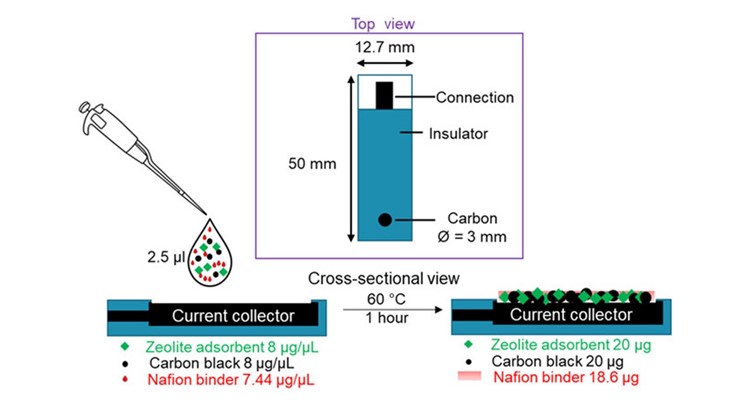Ameloot Group
Manipulating Porous Matter
Adsorption-Based Electrochemical Sensor Design for the Aqueous Detection of Paracetamol @Advanced Engineering Materials
Adsorption-Based Electrochemical Sensor Design for the Aqueous Detection of Paracetamol @Advanced Engineering Materials

This study investigates the critical role of adsorption in the development of electrochemical sensors, focusing on carbon (Vulcan XC72R, acetylene black, and graphite) and zeolite (high-silica ZSM-5 and all-silica zeolite β) materials. Based on the paracetamol adsorption characteristics of these materials, an optimized disposable electrochemical sensor is created. This sensor exhibits a linear range of up to 5 μM and a remarkable detection limit of 150 nM (S/N = 3), ≈1000-time improvement over the blank sensor. Moreover, paracetamol can be measured selectively because glucose has no adsorption affinity for the selected sensor materials. These findings underscore the significance of adsorption properties in sensor material selection in enhancing sensitivity and robustness against interfering species.
More information can be found here, or on our publication page.